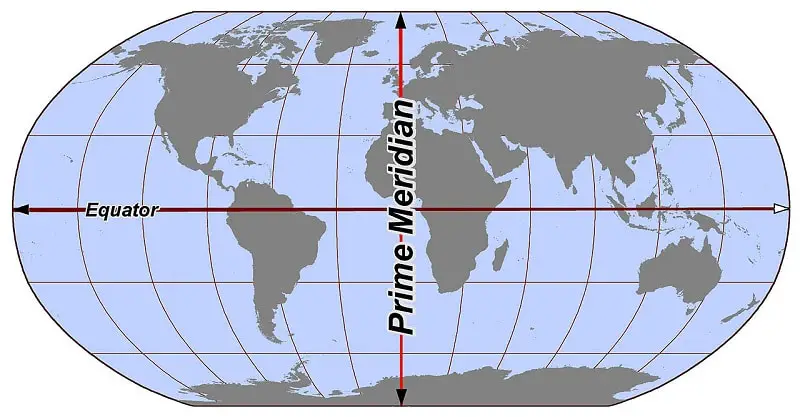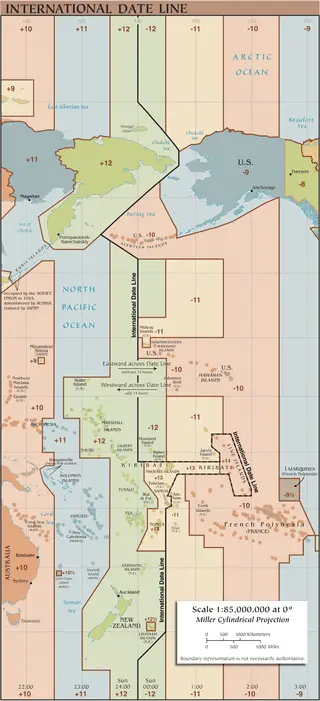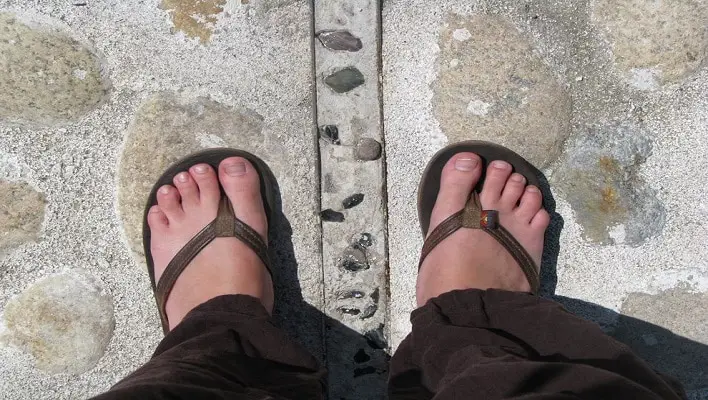Well, if I talk in terms of as microscopically as possible, there can be infinite numbers of lines of longitude that form circles around the earth. I mean, all of them there are imaginary. We can create as many as we want!!! One from your home, and one from the home adjacent to yours.
However, if I talk in terms of geographical importance, in total, there are 360 lines of longitude. In this exclusive article, I am going to explain that what are lines of longitude? Why they are important in our day-to-day life? Most importantly, out of 360, which one is the most important one, and, of course, why??
What are Lines of Longitude?
Lines of longitude are nothing but the vertical imaginary circular lines that we use to measure the east or west direction across the globe. Not to mention, all the lines of longitudes intersects at the geographical north and the geographical south pole. Just like lines of latitude, they are also measured in degrees. Additionally, longitudinal lines are always perpendicular to the lines of latitudes, and, vice-versa.
On one hand, all of the longitudinal lines are equal in length. On the other hand, the distance between two longitudinal lines varies. Such that, it is maximum around the equator and reduces exponentially as you move towards either of the geographical poles.
For example, the distance between two longitudes at the equator is approximately 111.045 km i.e the highest maximum. As you start to move vertically towards the north or the south pole, the distance reduces and finally becomes zero at the poles. That’s why longitudinal lines are never parallel to each other.
How many lines of longitude are there?
Since there are 360 degrees in a circle or a sphere and longitudes are measured in degrees. As a result, in total, there are 360 longitudinal lines. Just because each of the lines of longitude is also the one half of the great circle, they are also called the meridians.
Speaking of meridians, unlike latitudes, there is no permanent central longitude. Therefore, as a result, in order to measure position and time, over a period of history, cartographers and geographers have designated different locations as the central longitudinal reference point.
In the current world scenario, the longitudinal line that runs through Greenwich, England, is considered the central longitudinal line. That’s why the Greenwich meridian line is known as the prime meridian.
Greenwich Meridian – The Prime Meridian

Since the Greenwich Meridian is the prime meridian, it is assumed to be located at zero degrees longitude. Therefore, as a result, it virtually divides the world into the Eastern and western hemispheres.
If I talk in terms of the total longitudinal lines, there are 180 lines of longitude in the Eastern Hemisphere. On the other hand, there are 180 lines of longitude in the western hemisphere.
The meridian lines toward the east from the Greenwich meridian are measured in plus degrees, such that + 1 degree, +2 degree, and so on.
Similarly, the meridian lines toward the west of the Greenwich meridian are measured in minus degrees, such that -1 degree and -2 degree, and, so on.
Let’s talk about the history
The ancient Indians were the first ones to develop the concept of longitudes and prime meridian. As per the available evidence, in the 4th century CE, Aryabhatta, in his treatise Surya Siddhanta described the concept of Prime Meridian. According to him, the prime meridian passes through the Indian City of Ujjain and Rohtak.
Similarly, the Greek astronomer, Eratosthenes’s (c. 276 BC – c. 195 BC) prime meridian passes through Alexandria. Well, if I talk about the recent historical timelines, in the 18th century, so many countries had their own Prime meridian lines.
For example, Paris had Paris meridian, Germany had Berlin Meridian. Denmark had Copenhagen meridian, or, Great Britain had Greenwich meridian. However, due to the modern economic integration happening throughout the world, at the end of the 18th century, world leaders decided to have a single Prime meridian.
I mean having so many prime meridians at the same time was causing havoc in the process of integration and mobility. Therefore, as a result, in 1884, at the International Meridian Conference in Washington, D.C., countries voted Greenwich meridian as the single prime meridian of the whole world.
Importance of Lines of Longitude
Even if lines of longitude does not exist in reality, they are highly important in our day-to-day life. Such that, in order to find the position, we need to know about the degree of longitude.
In fact, without the existence of these virtual circular lines, we won’t be able to match the international date line throughout the world.
International Date Line and Prime Meridian
The Greenwich Meridian is the basis for the International Date Line. Well, what is International Date Line? According to the Geography Realm, the line on Earth where one calendar day becomes the next, we call it the International Date Line (IDL).
The line is generally found 180 degrees from the Prime Meridian. But, the line circumvents some regions and islands to avoid dividing contiguous pieces of regions and countries into two separate days.

Not to mention, there are 23 one-hour slices and two 30 minutes slices that divide the world up into different time zones. Traveling from east to west over the International Date Line advances the calendar by one day. Check the above image for proper understanding.
Finding Geographical Location using Longitude
Well, not only longitude but latitude also plays an important role in the determination of the position or location of any place around the globe. However, just because this article is only related to the lines of longitude. Therefore, I won’t be wasting your time. Let’s talk about longitudes only.
One degree of longitude can be further divided into 60 minutes. Similarly, each minute of longitude can be again further divided into 60 seconds. Such that, the longitudinal position of Sydney, Australia, is 151° 12′ 26” E (151 degrees, 12 minutes, and, 26 seconds East).
Editor’s Choice: Difference Between Latitude and Longitude in Tabular Form
That’s it for this post. If you like this article, share it if you like, like it if you share it. You can also find us on Mix, Twitter, Pinterest, and Facebook. Hey man, If you have come this far, do give us feedback in the comment section. It would make my day. You can also make a donation. Your donations will help us to run our website and serve you BETTER. Cheers!!!

Would it be possible to translate your website into Spanish because I have difficulties speaking English, and as there are not many pictures on your website I would like to read more of what you are writing?
I don’t know, maybe in the near coming future. BTW, keep visiting us!!!